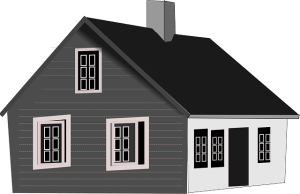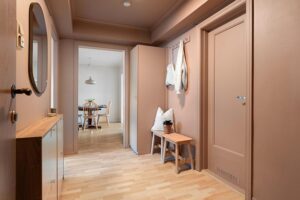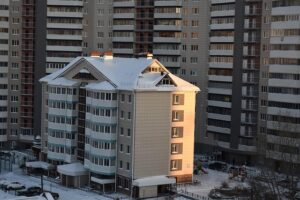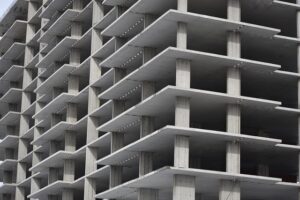Optimizing Your Living Space: A Guide to EC Floor Plans and Pricing in Singapore
The average price of an Executive Condominium (EC) in Singapore reflects a balance between affordability and quality, offering spacious layouts that cater to the diverse needs of families and young couples. These units are designed with modern amenities, natu…….

The average price of an Executive Condominium (EC) in Singapore reflects a balance between affordability and quality, offering spacious layouts that cater to the diverse needs of families and young couples. These units are designed with modern amenities, natural lighting, and smart home technology, positioning them as a middle-ground housing solution between HDB flats and private condominiums. The price of an EC is influenced by various factors including location, age, and layout, with newer or centrally-located units generally costing more to renovate. Renovation expenses are a significant investment and should be carefully planned against the backdrop of the average EC price to ensure a quality outcome within budget. Prospective buyers and rennovators should consider the specific floor plan and the associated costs for structural changes, materials, and labor to make informed decisions about their investment in an EC.
When embarking on the journey of acquiring a home in Singapore, the significance of Executive Condominium (EC) floor plans and layouts cannot be overstated. These designs not only shape the living experience but also influence investment potential. This article delves into the pivotal role EC layouts play in personalizing your living space, from the average price of ECs in Singapore to the impact of BCA regulations. We will explore the evolution of these layouts, key considerations for evaluation, and the benefits of various bedroom options. Additionally, we’ll examine popular features and the cost implications associated with different floor plans, ensuring you are well-equipped to make an informed decision that aligns with your lifestyle and budget.
- Understanding the Role of EC (Executive Condominium) Floor Plans and Layouts in Home Selection
- The Evolution of EC Layouts in Singapore: Trends Over the Years
- Average Price of ECs in Singapore: A Breakdown by Location and Layout Type
- Key Considerations When Evaluating EC Floor Plans: Space, Orientation, and Design Elements
- Analyzing the Benefits of Different EC Layouts: 3-, 4-, and 5-Bedroom Options
- The Impact of BCA (Building and Construction Authority) Regulations on EC Design and Layout
- Exploring Popular EC Floor Plan Features in Singapore
- Cost Implications: Estimating Renovation Expenses Based on EC Layouts and Floor Plans
Understanding the Role of EC (Executive Condominium) Floor Plans and Layouts in Home Selection

When selecting a home, especially an Executive Condominium (EC) in Singapore, the average price of EC units is just one aspect to consider. Prospective homeowners must also carefully examine the floor plans and layouts available, as these critical components play a pivotal role in the functionality and livability of the space. A well-designed EC floor plan can enhance daily life by optimizing natural light, ensuring efficient space utilization, and offering privacy where needed. The layout’s thoughtful arrangement can cater to family dynamics, accommodating various needs from ample storage for essentials to comfortable living and dining areas. For instance, a smartly planned kitchen layout can facilitate seamless interactions between cooking and socializing, making everyday tasks more enjoyable. Moreover, the design of common spaces like the master bedroom, children’s rooms, and communal areas should be considered to ensure they align with the family’s lifestyle and preferences. By understanding the role of EC floor plans and layouts, potential buyers can make informed decisions that prioritize their comfort and convenience, ultimately contributing to a more satisfying home-buying experience. Prospective buyers must weigh the average price of EC in Singapore against the potential for a layout that aligns with their living requirements and long-term aspirations. The interplay between cost, space efficiency, and design quality is instrumental in determining an EC’s true value and suitability for one’s unique needs.
The Evolution of EC Layouts in Singapore: Trends Over the Years

The evolution of Executive Condominium (EC) layouts in Singapore reflects a dynamic response to changing demographics and lifestyle preferences. Initially, ECs were designed with larger units catering to young couples and families seeking affordable housing options with space for growth. Over the years, as the average price of ECs in Singapore steadily increased, developers began to offer more diverse layouts that accommodated a range of needs, from smaller units for singles or couples without children to spacious configurations for larger families.
This evolution has been influenced by various factors including government policies aimed at balancing public and private housing, urban development plans, and the overall economic climate. For instance, during periods of economic growth, the average price of ECs in Singapore saw a rise, leading developers to introduce more luxurious finishes and innovative design features. The trend towards smaller living spaces has also been evident, as EC layouts have become more compact without significantly compromising functionality or comfort. This shift is partly due to the increasing cost of land and construction, which necessitates efficient use of space while still meeting the diverse requirements of homeowners. As a result, the typical EC layout in Singapore today offers a thoughtful blend of space optimization and design aesthetics that cater to contemporary lifestyles, all within the reach of middle-income families, thanks to the average price of ECs remaining relatively accessible compared to private condominiums.
Average Price of ECs in Singapore: A Breakdown by Location and Layout Type

When evaluating the average price of Executive Condominiums (ECs) in Singapore, it’s evident that location and layout type play pivotal roles in determining cost. ECs are hybrid housing designed to offer a subsidized route into condominium living for eligible first-timers, while also allowing resale to non-first timers after a certain period. The prices can fluctuate significantly based on the district and the specific floor plan chosen. For instance, ECs situated in prime locations such as Sentosa Cove or within mature estates like Bishan and Ang Mo Kio command higher prices compared to those in less established neighborhoods. Additionally, the layout type, whether it’s a 3-generation (3Gen) unit designed for multi-generational families or a standard configuration, influences the pricing. A typical 4-room EC in a non-mature estate may range from several hundred thousand to over a million Singapore dollars, while larger and more premium layouts can easily exceed this price bracket. Prospective buyers should consider the balance between space requirements, location preferences, and budgetary constraints when assessing the average price of ECs in Singapore. It’s advisable to consult real estate resources or professionals for the most current data, as market trends and government policies can affect pricing dynamics.
Key Considerations When Evaluating EC Floor Plans: Space, Orientation, and Design Elements

When assessing Extra Care (EC) floor plans and layouts in Singapore, potential residents should focus on several pivotal factors that can significantly influence their quality of life. Space utilization is a primary concern; ample living space not only offers comfort but also flexibility for future needs, such as accommodating mobility aids or additional care support. The average price of an EC unit in Singapore can vary widely depending on location, size, and the development’s facilities, so it’s crucial to balance desirable square footage with budget constraints. Orientation of the unit is another key consideration; optimal sunlight exposure and ventilation can contribute to a healthier and more pleasant living environment. Design elements that cater to accessibility, such as barrier-free bathrooms and entryways, are essential for long-term livability. These thoughtful design features, which reflect the needs of an aging population, ensure that EC residents can navigate their homes with ease and safety. Prospective residents should examine floor plans with a keen eye on these aspects to make an informed decision that aligns with both their current and future lifestyle requirements. The integration of smart home technology is also becoming increasingly common in EC developments, offering residents added convenience and safety features that enhance their living experience.
In addition to the physical layout, the community aspect within an EC should not be overlooked. A well-designed EC encourages social interaction through communal spaces that facilitate engagement and a sense of belonging among residents. This social infrastructure is complementary to the privacy and comfort afforded by individual units, ensuring that residents enjoy both independence and a strong sense of community. When considering the average price of an EC in Singapore, it’s important to weigh these design elements against the cost, as high-quality layouts and features can offer long-term value and greater satisfaction with one’s living arrangement.
Analyzing the Benefits of Different EC Layouts: 3-, 4-, and 5-Bedroom Options

When contemplating a new Executive Condominium (EC) in Singapore, discerning buyers often focus on the layout that best suits their lifestyle and financial considerations. The average price of ECs in Singapore serves as a guiding benchmark, reflecting market trends and providing a comparative framework for potential investors or residents. Among the various layout options available, 3-, 4-, and 5-bedroom units offer distinct advantages tailored to different needs.
A 3-bedroom EC is an ideal choice for small to medium-sized families or young couples seeking ample living space without excess luxury. These units are designed to optimize functionality, with each bedroom thoughtfully positioned to offer privacy and comfort. The average price of these units typically reflects a balance between affordability and quality, making them a popular option in the EC market. For those requiring more space, 4-bedroom ECs provide additional rooms that can serve as studies, hobby areas, or even guest suites. This extra flexibility is particularly beneficial for families with older children or those who entertain frequently. Pricing for 4-bedroom units tends to be higher due to the larger square footage and extra bedrooms, but still falls within a range accessible to a broader demographic.
Stepping up to a 5-bedroom EC offers the ultimate in spacious living, often featuring expansive layouts that can accommodate large families or those who value ample space for both leisure and work. The average price of such units is naturally higher, reflecting the premium on size and exclusivity. These ECs are designed with luxury in mind, including premium finishes and possibly even en-suite bathrooms for some bedrooms. Prospective buyers should weigh the benefits of additional space against their budget, as 5-bedroom ECs cater to a niche market seeking the most comprehensive living experience within an EC framework.
The Impact of BCA (Building and Construction Authority) Regulations on EC Design and Layout

The Building and Construction Authority (BCA) in Singapore plays a pivotal role in shaping the design and layout of Executive Condominiums (ECs), influencing not only the structural integrity but also the cost-efficiency and sustainability of these residences. BCA’s stringent regulations mandate high standards for energy efficiency, fire safety, and accessibility, which necessitate careful planning in EC floor plans and layouts. These guidelines ensure that each unit maximizes space while adhering to the required living and functional areas, thus affecting the average price of an EC in Singapore. Developers must balance these regulatory requirements with market demands to offer competitive pricing without compromising on quality. The BCA’s Green Mark Scheme further encourages developers to incorporate eco-friendly features, which can potentially lower utility bills for residents and add long-term value to the property. As a result, the integration of BCA standards into EC designs is a critical factor that influences the overall cost, making it essential for developers to stay abreast of these regulations to align with the evolving real estate landscape in Singapore.
Exploring Popular EC Floor Plan Features in Singapore

In Singapore, Executive Condominiums (ECs) are a popular housing option for families and young couples due to their unique blend of benefits that lie between public and private residential properties. These ECs often feature a diverse range of layouts and floor plans that cater to the varying needs of potential homeowners. When exploring popular features in Singapore’s EC floor plans, one will find that spaciousness and thoughtful design are common threads. From open-concept living spaces that encourage family interaction to well-planned utility areas, these units are crafted with daily living in mind. The average price of an EC in Singapore has been on the rise, reflecting the high demand for these properties and the value they offer. Prospective buyers often look for modern amenities such as en-suite bathrooms, ample storage solutions, and smart home features integrated into the design. Additionally, many EC floor plans prioritize natural light and ventilation, with large windows and balconies that enhance both the aesthetic and functional aspects of the living space. As such, the average price of an EC not only represents the quality of the construction but also the lifestyle that comes with it, making it a significant investment for many Singaporeans. The layouts are designed to optimize the use of space without compromising on comfort or luxury, ensuring that residents enjoy both a stylish and practical living environment. With the average price of an EC continuing to reflect its market value, it’s evident that these properties offer a compelling proposition for those looking to upgrade from smaller HDB flats or seeking a more affordable alternative to private condominiums.
Cost Implications: Estimating Renovation Expenses Based on EC Layouts and Floor Plans

When considering a renovation for an Executive Condominium (EC) in Singapore, understanding the cost implications is paramount. The average price of an EC varies significantly based on its location, age, and layout. Renovation expenses are influenced by these factors as well; newer ECs or those situated in prime locations tend to have higher renovation costs. Prospective rennovators should examine existing floor plans and layouts closely, as the design can affect the scope of work and the materials required. For instance, an open-concept layout may necessitate more sophisticated structural changes compared to a traditional partitioned design.
To accurately estimate renovation expenses for an EC, one must consider the specific layout and intended alterations. A detailed floor plan is essential for cost projection, as it outlines the extent of work required. For example, the installation of new flooring, reconfiguring electrical circuits, or constructing additional built-in storage will all contribute to the overall cost. It’s advisable to engage several contractors to provide quotes based on the specific EC layout, as this allows for a comparative analysis and can lead to more accurate budgeting. Understanding the average price of an EC in Singapore, coupled with a tailored renovation estimate, equips homeowners with the necessary financial foresight to make informed decisions regarding their investment.
When selecting an Executive Condominium (EC) in Singapore, discerning homeowners are well-advised to consider a myriad of factors, from the evolving trends in EC layouts to the cost implications of potential renovations. This article has delved into the pivotal role that floor plans and layouts play in this decision, charting their evolution, analyzing price trends across various locales, and highlighting key considerations for evaluating space utilization, orientation, and design elements. It is clear that understanding the nuances of EC designs, as governed by BCA regulations, and being aware of the benefits offered by different bedroom options—whether it’s a 3-, 4-, or 5-bedroom unit—is crucial for making an informed choice. Prospective residents must also factor in the associated renovation costs, which can vary significantly depending on the chosen layout. Ultimately, the ideal EC floor plan not only caters to lifestyle needs but also aligns with one’s financial planning, as evidenced by the average price of ECs in Singapore, which remains a dynamic and affordable housing option for many.







